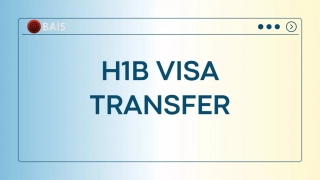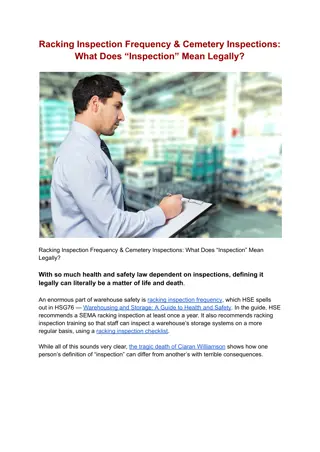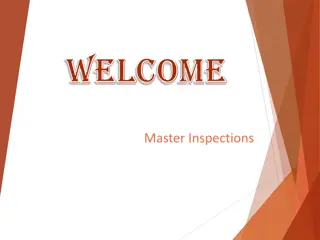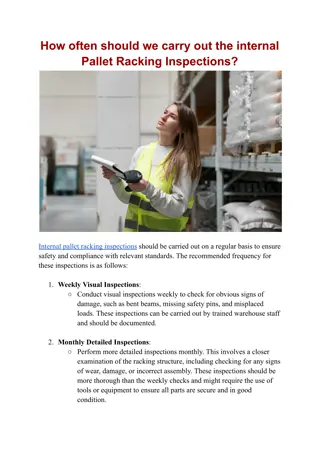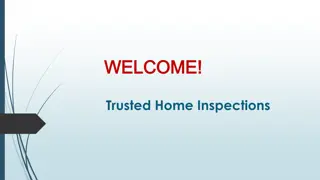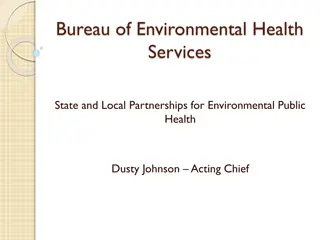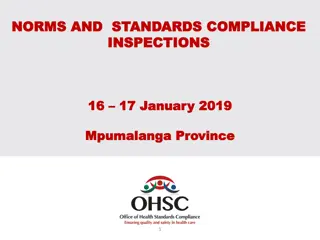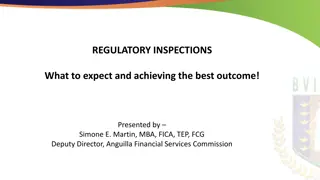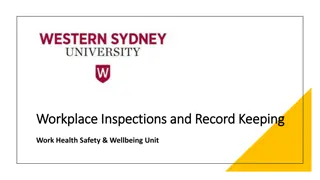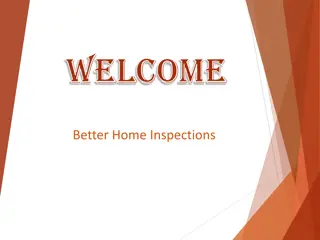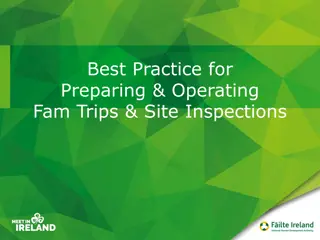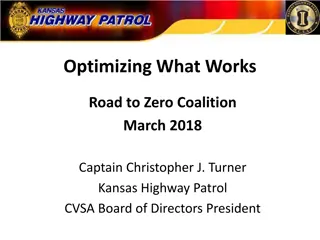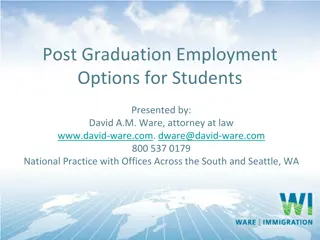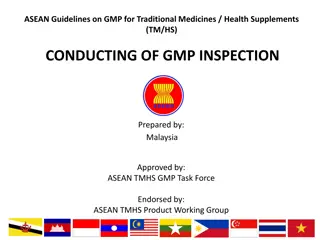
Preparing for a New Era in H1B and L1 Site Inspections
"Development and objectives of FDNS and ASVVP, compliance practices for site visits, fraud detection and national security mission, statistics, compliance concerns, and USCIS policies. Best practices for managing administrative site visits."
Download Presentation

Please find below an Image/Link to download the presentation.
The content on the website is provided AS IS for your information and personal use only. It may not be sold, licensed, or shared on other websites without obtaining consent from the author. If you encounter any issues during the download, it is possible that the publisher has removed the file from their server.
You are allowed to download the files provided on this website for personal or commercial use, subject to the condition that they are used lawfully. All files are the property of their respective owners.
The content on the website is provided AS IS for your information and personal use only. It may not be sold, licensed, or shared on other websites without obtaining consent from the author.
E N D
Presentation Transcript
Small Business Financing INDOT Vendor Seminar October 22, 2020 Andrea McGordon VP / Private Banker Andrea.McGordon@oldnational.com 317-254-6315 Paul Paquette SBA Business Development Officer Paul.Paquette@oldnational.com 317-837-3106
Paul Paquette / SBA Lending Transactions Benefits of SBA Loans Dedicated SBA Specialist in Market. Dedicated SBA Support Team: Loan Approval / Closing / Servicing Excellent Loan Terms: High LTV, Long Amortizations Owner-Occupied Commercial Real Estate Business Acquisitions / Partner Buy-Outs Business Start-Ups Debt Refinance SBA Eligibility Criteria: For-Profit Business Less than $15MM Tangible Net Worth Less than $5MM Net Income Before Taxes 2
Opening Discussion How many plan to start-up a business? How many plan to buy into an existing business? How many are interested in acquiring an existing business? How many are interested in purchasing industrial equipment? How many are interested in purchasing or improving commercial real estate? How many are interested in refinancing existing business debt? 3
Typical Lending Terms [1] Term/Amortization in years. Loan terms may allow for a weighted average where appropriate. Asset Allocation SBA 7a Guaranteed Program Financing Advance Rates 4
Lending Decision Factors Owner s Management & Industry Experience Owner s Credit, Character and Reputation Source of Owners Equity Injection Ability of Business Cashflow to Repay Projected Debt Business/Industry - potential/risks Sufficient working capital to fund business operations Sufficient collateral or SBA program support Personal guarantees of all 20% or more owners May require owners to pledge some or all significant personal assets 5
Financing a Business Acquisition Lenders will typically require: Purchase Agreement or detailed Letter of Intent, including price, assets included in the purchase, and terms of seller financing, if applicable. Most Recent 3 Years Federal Income Tax Returns of Business Being Purchased. Current Interim Financial Statements, and YOY comparison. Buyer s Business Plan and Projected Income Statements. Buyer s Business & Personal Federal Income Tax Returns. Cash Equity Injection (typically 10% - 20% of total project cost). Personal Guarantees of all owners of 20% or more of the business. Buyer s Personal Financial Statement. Franchise Agreement, if applicable. Due diligence process follows asset appraisals, business valuations, appraisal/environmental for real estate, title work, etc. Legal documentation/negotiation 6
Financing a Start-up Business Lenders will typically require: Business Plan Description of the business Borrower s role in operating the business. Borrower s & key employees management resumes. Marketing strategy. Detailed breakdown of all project costs (real estate, FF&E, initial operating expenses). 2 years projected income statements, first year broken out monthly. Cash Equity Injection (Typically 10% 30% of total project cost). Personal guarantees of all owners of 20% or more of the business. Borrower s Business and Personal Federal Income Tax Returns (3 Years). Borrower s Interim Business Financial Statements, if applicable. Borrower s Personal Financial Statement. Franchise Agreement, if applicable. 7
Financing Commercial Real Estate Lenders will typically require: Signed Purchase Agreement or Letter of Intent Buyer s Most Recent 3 Years Business Federal Income Tax Returns Buyers Interim Financial Statements and YOY Comparison Buyer s Personal Financial Statement Cash Equity Injection (Typically 10% - 20% of Purchase Price) Due diligence process follows asset appraisals, business valuations, appraisal/environmental for real estate, title work, etc. Legal documentation/negotiation 8
Financing Options Bank Financing Options Conventional loan products Lines of credit Term loans Real estate loans SBA loan products SBA 7a guaranteed programs - includes lines of credit, term and real estate loans SBA 504 Real Estate & Equipment typically 50% bank loan, 40% SBA and 10% owner s equity If there is a change of ownership, owner s equity may be increased to 15% and SBA s portion limited to 35% Seller Financing Options Subordinate to bank loan. Full Stand-by (may be treated as equity in some cases) Private Equity/Venture Capital Companies Debt financing and equity ownership 9
Questions? 11


